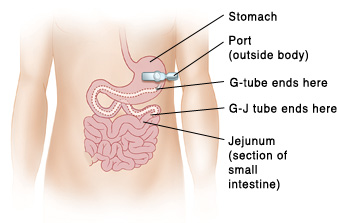On Tuesday, I went to the doc’s for a little procedure to replace my G-J tube (see bottom of post for explanation). The surgery was not the scary part. What really got my palms sweating, breathing straining, and mind racing was the five minutes spent in the ICU before heading to the procedure room. The spot we stood on was the same spot I would struggle to reach back when I was learning to walk again. As I mentioned in my last post, the days spent in that ward didn’t produce the fondest memories. Peeking into the room I had stayed, I started remembering things much too vividly.
I’ve been experiencing flashbacks since I was discharged from the hospital. I read that it’s pretty common for ICU patients to have PTSD so I guess that’s what you could label it. Probably the worst I ever felt it was when my dad came behind me and grabbed my shoulder to get my attention. All of a sudden, I flashed back to being held down in my hospital bed, hands grabbing my shoulders. When I was suffering from delusions and hallucinations in the ICU, I had tried tearing out my IVs and taking off my oxygen mask, so they had to strap my arms to the bed for a couple days. Despite the fogginess of my memory, I can safely say that was literally the worst thing I’ve ever gone through in my life. Stab me with needles, cut me open, give me terrible antibiotics — I can handle it. But I pray I never have to be strapped down again and forced to feel powerless in such a frightful time.

Standing in the ICU on Tuesday, I couldn’t defend myself against this surge of panic, irrationally telling me that I was trapped the moment we entered, that I wouldn’t be allowed to leave. Panic disorder, at its core, is a malfunction of the “fight or flight” instinct — I was a cornered animal. (I don’t realize how powerful the brain is until it’s processing hundreds of memories in the space of a few seconds.) Thankfully, we were out of there within five minutes, and I was able to shake off the anxiety.
Minutes later, I was on the operating table getting fentanyl through my IV. Like I said, it’s a little procedure, so I didn’t have to be put to sleep. But feeling tubes getting shoved in and out of the stomach/intestine isn’t pleasant, so pain/dopey drugs are helpful. While lying there for the next hour, I allowed my mind to drift and consider the source of my anxiety — the ICU room. A room? Giving me anxiety as if the room is something animate and out to get me? In my drug-induced haze, it all seemed silly.
Just recently, Kristina told me that I should stop thinking of the ICU in a negative light, and instead think of the good that came out of it (see last post). I read this book called Wisdom Sits in Places, and it explores the significance of “place” for the Apache people, specifically how the places were named after whatever made them significant. They named the places. They decided the significance of those places. They could name a river “First Water” because it was the first body of water the tribe discovered in the area, or they could call it “Blood River” because of a murder that occurred there. It’s their choice.
Couldn’t the same concept be applied to my connection with the ICU? I’m not gonna rename the room “Party Land,” but I can decide the significance of it. I should be able to face that room and thank God that he gave me strength and purpose despite all that was happening. I should face it and remember the sacrificial love my family, Kristina, and many friends showed while I was in there. I should face it and realize how far I’ve come, rather than letting the memories of it drag me back.
Isn’t new perspective pretty dope? And speaking of dope, I guess drugs really are good for finding new points of view. BUT DON’T DO DRUGS, GUYS! Anyway, as I embark on my journey to San Francisco, I will be pondering the significance of Hawai‘i. I’m going to miss this place and you brilliant people.
A G-J tube is a feeding tube that enters my stomach and small intestine. I haven’t really told many of my friends about it, because I get pretty embarrassed. But I’m kinda over embarrassment now. Since 2010, I’ve been forced to rely on nutritional supplements through the feeding tube in order to keep from being malnourished. While cystic fibrosis is called a “lung disease,” it affects nearly my entire body — including my ability to absorb fat. On top of that, having an average heart rate of 120, breathing many times harder than I’m supposed to, and constantly fighting off infections … that leads to many calories burned (and many much-needed naps). I used to get these feeds while sleeping, about 2,500 calories. Since my last hospitalization, I’ve needed 4,500 calories to keep weight on.

You have a gift of the pen, or keyboard, Brad. Keep writing and keep inspiring, it’s therapeutic for all of us.
LikeLike
Thank you so much! Comments like this keep me writing!
LikeLike
You are AMAZING! So proud Braddy
LikeLike
Love you too! Hope the move has been fine (:
LikeLike
You will never know how much you are helping this old woman through your blog! Love you
LikeLike
I’m so glad you’ve found value in it!
LikeLike
Kristina is one awesome lady. What an awesome perspective. Thank you for sharing.
LikeLike
I am incredibly blessed.
LikeLike
Oh honey… Just wow!!!
LikeLike